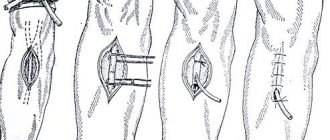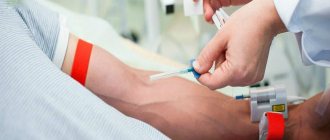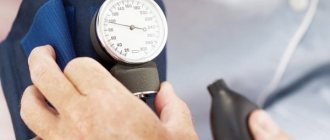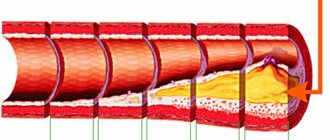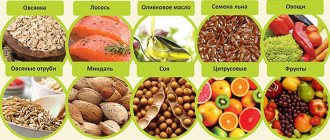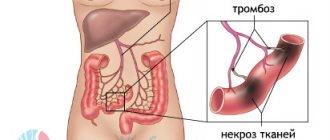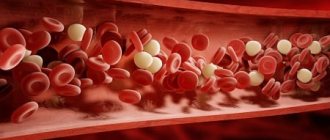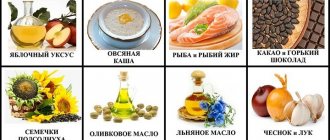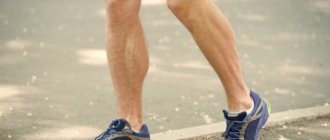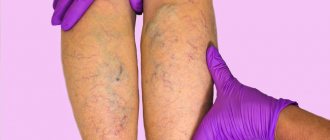What foods dissolve blood clots? The appearance of blood clots is a dangerous situation that can even lead to death. The formation is otherwise called a clot, which is formed due to blood thickening. Its consistency can be restored with medication or with the help of conventional products.
What is healthier – tea or coffee, you will find out in this article –
Causes and symptoms of thrombosis
The formation of a defect closing the lumen of the vein depends on several factors:
- increased thrombus formation due to hereditary burden, autoimmune diseases, condition after chemotherapy;
- vascular injury due to surgery, infection, allergic reactions, after pregnancy and childbirth;
- stagnation in the bloodstream when leading a sedentary lifestyle or staying in one position for a long time.
Sometimes the clot can resolve on its own.
Diseases that contribute to the formation of blood clots:
- malignant neoplasms;
- heart diseases;
- diabetes;
- excess weight;
- hormonal disorders;
- pathological processes in the kidneys.
People over 55 years of age who suffer from obesity, as well as women during pregnancy, are at risk.
There are several forms of the disease:
- Damage to the veins of the lower extremities. The pathological process is complicated by the development of ulcers, gangrene and necrosis. Most often, blood clots affect the femoral vein, resulting in pain in the legs, cramps, and impaired innervation due to blood stagnation. The patient complains of a feeling of fullness, a feeling of heat or cold. Upon examination, dilated superficial veins are visible on the skin.
- Hemorrhoids are a common occurrence in women after difficult childbirth and multiple pregnancies. Signs of the disease are pain, burning sensation and swelling in the anus. There is a high risk of node damage followed by infection and inflammation. If the temperature rises and there is purulent discharge, you must immediately seek help.
- Thrombi of the cavernous sinus. The pathology is accompanied by severe headache, blurred vision, convulsions, impaired consciousness and fever. If you do not seek help in a timely manner, the patient may fall into a coma.
- Lesions of the subclavian vein are a common ailment of people involved in sports. Stagnation of blood provokes a burning sensation, bloating in the arms, and pain after exercise. The correct course of therapy gives a favorable prognosis.
- Retinal thrombus. Caused due to blockage of small vessels in people suffering from hypertension, diabetes and atherosclerosis. Symptoms of the pathology: deterioration of visual acuity, dark spots before the eyes, distorted vision.
Blood clot dissolving foods
The degree of danger of blood clots is determined using associated factors - blood thickness, its stickiness, and fluidity. Deviations from the norm are often caused by nutrition. Garlic, ginger, any fatty fish or moer (black mushrooms) can sharply reduce the viscosity.
These products are natural anticoagulants, with the same effect as aspirin. They stop the activity of thromboxane, which increases the ability of lamellar cells to unite into one large clot that covers the damaged area of the vessel. The formation of blood clots is prevented by:
- Garlic. An American professor isolated achoene (a sulfur-containing substance) from the product, which even surpasses the anticoagulant effect of aspirin. This component of garlic appears after it is pressed or crushed. Achoene helps reduce cholesterol levels. There are several ways to increase the amount of sulfur content. It is better to crush garlic or fry crushed pieces, and then add them to tomatoes or sour foods. This will increase the release of ajoene. A lot of it is also formed when mixing finely grated (or crushed) garlic with olive oil and cheese (it is better to use feta).
- Onion. It blocks the negative effects of fatty foods. Onions contain quercetin, a strong antioxidant. It prevents the formation of clots and stops the process that has already begun, causing the clots to dissolve. The highest concentration of quercetin is found in red onions; white onions contain much less. There are also a lot of antioxidants in broccoli, red wine, and tea.
- Fatty fish. Almost 80 percent of strokes are caused by blood clots. Fatty fish helps to remove and prevent them. Just 150 g of sardines or salmon eaten reduces fibrinogen concentration by 16 percent and increases bleeding by 11 percent. Canned tuna dissolves blood clots well; you need to eat 195 g of it for this purpose. This amount acts like aspirin.
- Red wine and grapes. Just 2.5 glasses reduce the stickiness of platelets that collect in clots. The effect of wine eliminates blood clots by 40 percent within 45 minutes. Grape juice (red) has an effect identical to wine. However, three times more juice is needed to liquefy blood clots. Resveratrope, which is found in the skin of the berries, counteracts blood clots. The drink is made from red grapes, which are crushed together with the skin. In contrast, the skins from the white berries are discarded, so the wine will be ineffective. Women are recommended to drink a glass of red wine a day, men - 2 times more. This is enough to eliminate blood clots.
- Green tea (see). It contains catechin, which inhibits platelet aggregation as actively as aspirin, which prevents the formation of arterial plaques.
- Vegetables and fruits. They contain a lot of vitamin C and fiber. They dissolve blood clots well and slow down the accumulation of platelets. The concentration of fibrinogen is especially low in vegetarians who completely abstain from animal products. Such people have thinner blood than those who eat meat.
- Capsicum red hot pepper. It can be added to any dishes. Chili contains vitamins E and A, as well as folic acid and potassium, which thin the blood and dissolve blood clots.
- Spices. Many herbs can help prevent clots from forming. The most effective are ginger, tumeric and cumin. The list is completed by cloves, which are even more powerful than aspirin. The reason lies in the content of efgenol in the herb, which reduces the production of thromboxane. Ginger turns out to be more effective against blood clots than Indomethacin.
- Moer - Chinese mushrooms. They contain many components that thin the blood.
- Olive oil reduces platelet stickiness. To prevent the formation of clots and their dissolution, it is enough to add a dessert spoon of oil to food daily (course – 8 weeks).
It is necessary to exclude fatty foods from the diet, which increase the stickiness of platelets, which provokes the formation of blood clots. Or add red onion and garlic to such food. They will reduce harmful effects. You should also minimize the amount of foods with vitamin K, which increase blood clotting. The list is topped by chokeberry berries. Then comes spinach and other greens.
Treatment of the disease
After the examinations, the doctor selects a treatment regimen. Treatment of pathological formation is complex and involves not only taking pharmaceuticals, but also following a diet, exercise therapy, and a healthy lifestyle.
Medicines
The drugs are divided into two groups. Let's look at each of them.
Medicines that dissolve blood clots
This category includes thrombolytics, which can quickly remove a pathological clot and restore blood flow. They are used in emergency care.
The treatment regimen is selected in the hospital under the supervision of a doctor. Therapy is most effective on the first day after diagnosis of the disease.
The medicine for blood clots in blood vessels has a number of side effects, so its use is necessary only in life-threatening conditions. The following products are mainly used: Urokinase, Fibrinolysin, Streptase.
Symptoms
Blood clots can form in veins and arteries. Depending on the location of the blood clot, the symptoms of the two types of thrombosis are different, described in more detail in the table:
| Kinds | Symptoms |
| Venous | Neurological disorders in stroke |
| Visual disturbances or pain in the cervical spine | |
| The occurrence of liver cirrhosis, pancreatitis | |
| Arterial | Neurological disorders in stroke |
| Numbness, paleness or blueness, coldness in the legs or arms | |
| Heart pain during heart attack | |
| Intestinal obstruction |
Prevention
Simple rules will help you avoid blood stagnation and clot formation:
- Compliance with the prescribed diet and diet.
- Weight control.
- Moderate physical activity, daily exercise, walks in the fresh air.
- In the summer, walking barefoot on sand or pebbles is beneficial.
- Drink at least 2 liters of fluid per day.
- Taking medications according to the regimen prescribed by the doctor.
- Prevention of injuries at work and at home.
Thrombosis requires constant monitoring of the condition and regular examinations. The disease has a favorable outcome if you seek help in a timely manner and follow preventive measures.
LiveInternetLiveInternet
-Music
—Categories
- (1)
- (0)
- ARCHIVE (20)
- FRAMES (13)
- SCHEMES (1)
- ASTROLOGY (52)
- ASTRONOMY (26)
- HYPOTHESES (3)
- AUDIOBOOKS (4)
- UNCLASSIFIED (44)
- VIDEO (117)
- VIRTUAL TOURS (36)
- ALWAYS AT HAND (41)
- MONEY (20)
- CHILDREN (10)
- DESIGN, DAY DECORATION (82)
- COMMENTS (4)
- FOR CREATIVITY (205)
- COMMENTS-PICTURES (12)
- PETS (2)
- MYSTERIES OF NATURE (12)
- EARN (7)
- HEALTH (708)
- ALCOHOLISM, DRUG ADDICTION (25)
- MEDICINES (7)
- INTERESTING (132)
- INTERESTING (40)
- ART BEAUTY (61)
- ROOM FLOWERS (20)
- COOKING (385)
- BAKERY (59)
- HOMEMADE DELICACIES (28)
- BLANKS (16)
- SNACKS (14)
- FIRST COURSES (2)
- SALADS (11)
- CULTURE (14)
- THE WORLD AROUND US (247)
- ANIMALS (92)
- NATURE (68)
- BIRDS (11)
- MY MOTHERLAND - USSR (21)
- MY RUSSIA (161)
- KALUGA - MY HOMELAND (9)
- MOSCOW (2)
- THE TRUTH OF OUR LIVES (51)
- MUSIC CARDS (5)
- MUSIC (128)
- ANCESTORS' LEGACY (229)
- TRADITIONS (2)
- GODS, SPIRITS, MYTHS (1)
- GODS, SPIRITS, MYTHS (11)
- LANGUAGE (5)
- SCIENCE (29)
- LIBRARY (14)
- ENCYCLOPEDIA (5)
- OUR REALITY (64)
- THE UNKNOWN (157)
- MYSTERIES OF HISTORY (12)
- INFERNO (1)
- NEW YEAR'S (5)
- NEW KNOWLEDGE (204)
- EXPLORE (4)
- HISTORY (67)
- LION FUSH (4)
- ABOUT MUSHROOMS (7)
- IN MEMORY OF IDOLS (14)
- PLAYERS (4)
- WISHES (42)
- CONGRATULATIONS (231)
- COMPUTER USE (80)
- USEFUL TIPS (83)
- USEFUL LINKS (72)
- POLITICS (255)
- ECONOMY (87)
- LET'S HELP (23)
- LIKED (17)
- PARABLES, QUOTES (21)
- PSYCHOLOGY (535)
- VECTOR PSYCHOLOGY (26)
- IMPACT (46)
- PSYCHOSOMATICS (12)
- TRAVEL (1)
- FRAMES (401)
- FOR VIDEO (2)
- WINTER (8)
- CULINARY (2)
- FLORAL BACKGROUND (4)
- RELIGION (81)
- GREAT Rus' (31)
- GARDEN, VEGETABLE GARDEN (331)
- MOST NEEDED LINKS (7)
- SOCIAL NETWORKS (2)
- POEMS (280)
- SCHEMES FOR DESIGN (440)
- DECORATIONS (298)
- GIRLS (1)
- NEXT BUTTONS (25)
- NEW YEAR'S (145)
- SEPARATORS (4)
- LESSONS ON LYRA (132)
- PHILOSOPHY OF MYSTICITY (5)
- FLOWERS (45)
- QUOTES AND APHORISMS (11)
- CLEAN COMPUTER (20)
- TO BE REMEMBERED (69)
- ESOTERICA (414)
- INFORMATIVE MYSTIC (38)
- KARMA (40)
- MAGIC (23)
- DESTINY (16)
- TAROT (2)
- ENERGY (26)
- EPIGRAPH (60)
- HUMOR (81)
- LEGAL ADVICE (110)
—Search by diary
—Subscription by e-mail
-Friends
— Regular readers
—Communities
-Statistics
Dr. Jain's Tips on How to Thin Blood with Garlic
One of the most powerful and well-known anticoagulants in garlic is called achoene. Here's how to get the most ajoene from garlic, according to Professor Mahendra K. Jain.
- Do not chop the garlic, but crush it. This releases enzymes and allicin, which is converted to achoene.
- Lightly fry the garlic. Temperature treatment also helps.
- Cook garlic with tomatoes or add it to other acidic foods. Even a small amount of acid promotes the release of achoene.
- Add a little vodka to the crushed garlic to cover it, and let it sit uncovered for a few days. This also releases the achoen. Yes, the old Russian folk recipe for thinning the blood really helps, as Dr. Jain's experiments have shown. In addition, he found that a lot of achoene was also released when crushed garlic was mixed with feta cheese and olive oil (a famous Greek remedy for heart disease).
Hirudotherapy
When treating against thrombosis, an alternative method such as hirudotherapy can be used. This method is recommended for patients suffering from excessive blood viscosity, including those for whom drug therapy is contraindicated for a number of reasons.
The saliva of the pharmaceutical worm contains enzymes that help dissolve blood clots, prevent accelerated blood clotting, and eliminate the inflammatory process in thrombophlebitis.
In addition, before planting leeches, there is no need to use analgesics, since the worm’s saliva already contains painkillers.
How many leeches one patient needs per session will be determined by the attending doctor based on the location of the affected veins, the amount of blood clots, the intensity of the inflammatory process and other indicators.
Chestnut
When treating thrombophlebitis of the lower extremities with folk remedies, horse chestnut is often used. With regular use of the plant:
- the vascular wall is strengthened;
- blood vessels are restored;
- blood circulation is normalized;
- blood clots are neutralized.
A safe product that can be easily prepared at home. Chopped chestnuts (1/2 cup) are poured with vodka (400 ml) and infused for 3 weeks. Take 20 drops orally daily until the desired result appears (the course lasts at least 1 month). Repeat the course after a week's break.
Other recipes using chestnut to relieve blocked veins in the legs:
- Soak dry chestnuts (2 pieces) in water for 12 hours, remove the yellow-green shell. Fill the shell with water (200 ml), put on fire, and cook for 10 minutes. Leave for 6 hours. Strain, drink 3 times daily, 1 tbsp. l. before meals (half an hour before). The course lasts 12 days and can be repeated after a 10-day break.
- Grind dry chestnut flowers (5 tbsp), add vodka (1/2 l), place in a dark place for 10 days, shake every day. Drink 2 times daily, 25 drops.
- An effective way is to use ointment. Ground fresh chestnut flowers (100 g) are mixed with grated comfrey root (50 g) and hot pork fat (300 g). Place in a warm place for 3 days. Moisten napkins with ointment and apply to the affected areas overnight.
It must be remembered that chestnut thins the blood and removes thrombosis, therefore, when treating thrombosis, it is necessary to monitor the prothrombin index. When it decreases to 80%, stop taking it and take a week break.
Can it resolve?
The body has a system that controls the rheological properties of blood. If a person is healthy, then after the formation of a blood clot, a special protein, plasmin, is produced, which helps break down the fibrous clot. Collagen structures and microvessels also help dissolve the blood clot. They gradually penetrate the pathological formation, providing it with good blood supply. After some time, the clot dissolves completely or decreases in size. Thanks to the coordinated work of these mechanisms, the human body is able to independently resolve a blood clot.
Apple vinegar
When treating thrombophlebitis with folk remedies, undiluted apple cider vinegar is often used. They moisten the affected areas daily in the morning and evening for a long time.
There are other recipes:
- Fill a container with water (the water level should reach your knees), add ½ liter of apple cider vinegar, and place your feet in the solution for 3 minutes. After this, put on warm socks and lie down so that your legs are elevated.
- For a compress, moisten a napkin with apple cider vinegar and apply it to the affected areas. Cover the top with film and a warm towel. Leave for half an hour, legs should be in an elevated position.
- In case of inflammation, prepare a mixture of baking soda, white bread and apple cider vinegar. The resulting pasty mixture is applied to the areas of inflammation, covered with film and a warm scarf. Keep the compress for 8 hours, then wash off with water.
- For internal use, add apple cider vinegar (1 tbsp) to water (200 ml). Drink once daily, in advanced cases - 2 times.
The use of apple cider vinegar is considered a safe way to help treat deep vein thrombophlebitis. However, consultation with a doctor is required before use.
Proper nutrition
With an increased tendency to blood clots, patients are advised to adhere to serious dietary restrictions.
The following foods should be excluded from the diet:
- Fatty meats, sausages, smoked meats, butter, pork and goose fat, lard, in short, everything that contains animal fats.
- Cheese with a high fat content, sauces based on mayonnaise and fatty sour cream.
- Dishes and products high in preservatives and transformed fats: fast food, quick-cooking dishes.
- Black tea and coffee, sweet soda.
- Alcoholic drinks.
The list of products that help resolve blood clots and thin the blood includes: lemons, fresh onions and garlic, cranberries. To thin the blood, it is useful to eat: broccoli, pomelo, oranges, tomatoes, kelp, cucumbers, bell peppers.
The basis of the diet should be foods high in fiber: cereals, vegetables, lean meats, sea fish and other seafood.
It is recommended to use vegetable oils, low-fat yoghurts and sour cream as sauces. Patients need to drink at least 2 liters of water per day.
Cabbage
Among folk remedies for thrombosis, compresses made from cabbage leaves are popular. The pre-beaten sheet is greased with vegetable oil and applied to the affected area. Fix with a bandage and leave for several hours.
Important information: Drugs (medicines) for the treatment of thrombophlebitis of the lower extremities
Treatment at home using cabbage is not dangerous, but it is recommended to consult a doctor before using the method.
